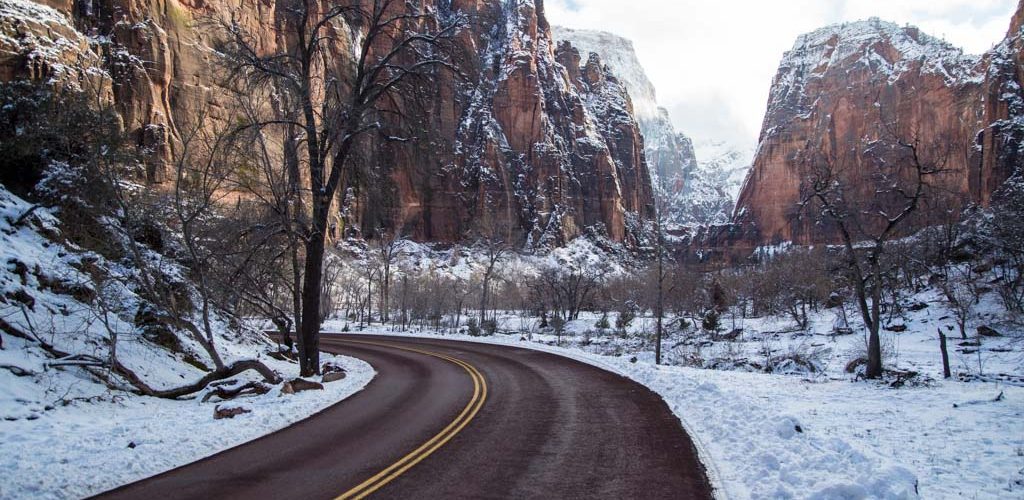When planning a trip to Zion National Park, understanding the weather patterns is crucial. Zion National Park Weather can be unpredictable, and being prepared will ensure a more enjoyable experience. This guide will cover everything you need to know about the weather in Zion National Park, including seasonal changes, what to pack, and how to stay safe.
Understanding Zion National Park Weather
Utah, specifically in the southwest region of the country, is home to Zion National Park. The park’s climate is primarily influenced by its geographical features, including its elevation, which ranges from about 3,666 feet to over 8,700 feet.
Seasonal Weather Overview
Spring (March to May)
Visit Zion National Park in the spring for an amazing experience. The weather starts to warm up, with temperatures ranging from the mid-50s to the high 70s (°F). However, spring can also bring unpredictable weather, including rain showers and even occasional snow at higher elevations.
What to Expect in Spring
- Daytime Temperatures: 50-70°F
- Nighttime Temperatures: 30-50°F
- Rainfall: Moderate
- Key Tips: Pack layers, as temperatures can vary significantly throughout the day.
Spring Highlights
Spring is known for its wildflowers and flowing waterfalls. It’s also less crowded than the summer months, making it an excellent time for hiking and exploring.
Summer (June to August)
In Zion National Park, summer is the busiest travel season. The weather is hot, with daytime temperatures often exceeding 100°F. This is also the time when afternoon thunderstorms are common, which can lead to flash flooding.
What to Expect in Summer
- Daytime Temperatures: 90-100°F
- Nighttime Temperatures: 60-70°F
- Rainfall: Low, but thunderstorms are common
- Key Tips: Stay hydrated, wear sunscreen, and plan activities for early morning or late afternoon to avoid the heat.
Summer Highlights
Despite the heat, summer offers long days and the opportunity to explore Zion’s famous slot canyons. The Narrows and Angels Landing are popular hikes, but always check the weather forecast for flash flood warnings.
Fall (September to November)
Fall is another fantastic time to visit Zion National Park. The weather cools down, and the autumn colors are stunning. Daytime temperatures range from the 60s to the 80s (°F), and the nights become cooler.
What to Expect in Fall
- Daytime Temperatures: 60-80°F
- Nighttime Temperatures: 40-60°F
- Rainfall: Low to moderate
- Key Tips: Bring layers for cooler evenings and be prepared for occasional rain.
Fall Highlights
The fall foliage in Zion is a sight to behold. This season also sees fewer crowds compared to summer, offering a more serene experience.
Winter (December to February)

Winter in Zion National Park is a quieter time, with fewer visitors and cooler temperatures. Snow is possible, especially at higher elevations, and temperatures can drop below freezing.
What to Expect in Winter
- Daytime Temperatures: 40-60°F
- Nighttime Temperatures: 20-40°F
- Snowfall: Possible, especially at higher elevations
- Key Tips: Dress in warm layers, and be prepared for snow and ice on the trails.
Winter Highlights
Winter offers a unique perspective of Zion National Park. The snow-covered landscapes are beautiful, and the park is much less crowded. On the other hand, ice and snow may cause some pathways to closure.
Preparing for Your Trip
What to Pack for Zion National Park
Packing appropriately for Zion National Park’s weather is essential. Here are some general guidelines:
- Spring and Fall: Layers, rain jacket, sturdy hiking boots
- Summer: Lightweight clothing, sunscreen, hat, plenty of water
- Winter: Warm layers, gloves, hat, waterproof boots
Safety Tips for Zion National Park
Dealing with Heat
- Hydration: Always carry plenty of water and drink regularly.
- Timing: Avoid strenuous activities during the hottest part of the day.
- Shade: Take breaks in shaded areas to cool down.
Flash Floods
Flash floods can occur suddenly, especially during summer thunderstorms. Always check the weather forecast and avoid hiking in narrow canyons if rain is predicted.
Hypothermia and Frostbite
In winter, be aware of the risks of hypothermia and frostbite. Avoid getting wet and wear warm layers of clothing.
Conclusion
Understanding the weather in Zion National Park is crucial for planning a safe and enjoyable trip. Whether you’re visiting in the heat of summer or the cool of winter, being prepared for the park’s unique climate will enhance your experience. Remember to check the weather forecast, pack appropriately, and always prioritize safety.
Visit Now: What is the Best Time to Visit Zion National Park?
FAQs
Q1. What is the best time to visit Zion National Park?
When the weather is moderate and the park is less congested, spring (March to May) and fall (September to November) are the ideal seasons to visit Zion National Park.
Q2. How can I stay safe during a summer visit to Zion?
To stay safe during a summer visit, avoid hiking during the hottest part of the day, stay hydrated, and be aware of the signs of heat exhaustion.
Q3. Are there any trails that are closed in winter?
Indeed, snow and ice in the wintertime may cause several trails in Zion National Park to close. Always inquire about the most recent trail conditions from park rangers.
Q4. What should I do if I encounter a flash flood?
If you encounter a flash flood, seek higher ground immediately and avoid walking or driving through flooded areas.
Q5. Can I visit Zion National Park year-round?
Yes, Zion National Park is open year-round. Each season offers a unique experience, but it's essential to be prepared for the varying weather conditions.



